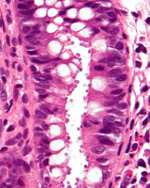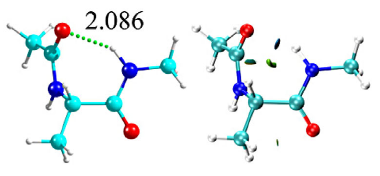News
EPJ D Highlight - Quantum manipulation power for quantum information processing gets a boost
- Details
- Published on 26 September 2017

Improving the efficiency of quantum heat engines involves reducing the number of photons in a cavity, ultimately impacting quantum manipulation power
Traditionally, heat engines produce heat from the exchange between high-temperature and low-temperature baths. Now, imagine a heat engine that operates at quantum scale, and a system made up of an atom interacting with light (photons) confined in a reflective cavity of sub-atomic dimensions. This setup can either be at a high or low temperature, emulating the two baths found in conventional heat engines. Controlling the parameters influencing how such quantum heat engine models work could dramatically increase our power to manipulate the quantum states of the coupled atom-cavity, and accelerate our ability to process quantum information. In order for this to work, we have to find new ways of improving the efficiency of quantum heat engines. In a study published in EPJ D, Kai-Wei Sun and colleagues from Beihang University, Beijing, China, show methods for controlling the output power and efficiency of a quantum thermal engine based on the two-atom cavity. In the familiar heat engine model at macroscopic scale, referred to as the Carnot heat engine, the efficiency increases as a function of the ratio between the temperatures of the low-and high-temperature baths. By comparison, the efficiency of two-level quantum heat engines is related to the level of quantum entanglement in these two states, which are either at a low or a high temperature, and display the same probability of being occupied.
EPJ Plus Highlight - Best tactical approach to handling patients with simultaneous parasitic and HIV infection
- Details
- Published on 06 September 2017

Copyright © 2012 Michael Bonert.
You are free to share and adapt this image as per the CC BY-SA 3.0.
New mathematical model for cryptosporidiosis - HIV co-infection explores their synergistic relationship in connection with prevention and treatment
One of the most common waterborne diseases worldwide is cryptosporidiosis, a parasitic disease affecting the small intestine and possibly our airways. It is a common cause of diarrhoea in HIV-positive patients, who are known to have lower immunity. Now Kazeem Oare Okosun from Vaal University of Technology in South Africa and colleagues from Pakistan and Nigeria have developed a new model and numerical simulations to determine the optimal combination of prevention and treatment strategies for controlling both diseases in patients who have been co-infected. Their results, recently published in EPJ Plus, show a positive impact on the treatment and prevention for cryptosporidiosis alone, for HIV-AIDS alone, or for both together.
EPJ D Highlight - How well electron transport works in furfural biogas
- Details
- Published on 05 September 2017

A new study offers scientists a tool for assessing the energy efficiency of biomass-derived fuel
Furfural is a promising candidate in the quest for alternative biofuels. The combustion industries are very interested in what could become a potential new type of fuel derived from atmospheric-plasma treatment of biomass. But before the gas can be considered for use on a large scale, it is essential to understand its energy characteristics. Now, a Spanish team has published its findings on the gas's energy efficiency in EPJ D. Ana Lozano from the Institute of Fundamental Physics in Madrid, Spain, and colleagues studied an electron beam entering a cell filled with furfural gas molecules to study its scattering characteristics, providing the first accurate experimental evaluation of the effectiveness of the interaction between electron and gas particles—via electron scattering cross-section measurements— for selected electron beam impact energies.
EPJ Data Science Highlight - A fresh look into the dynamics of scientific collaborations
- Details
- Published on 31 August 2017

In EPJ Data Science, Alice Patania and colleagues evaluate the collaborative interactions between scientists from a new perspective.
The structure of scientific collaborations has been the object of intense study both for its importance for innovation and scientific advancement, and as a model system for social group coordination and formation thanks to the availability of authorship data.
Over the last few years, complex networks approaches to this problem have yielded important insights and shaped our understanding of scientific communities. In our recently published article in EPJ Data Science, we propose to complement the picture provided by network tools with that coming from topological data analysis, which has at its core the notion of multi-agent interactions.
EPJ B Highlight: Improved model of energy highway along protein strands
- Details
- Published on 28 August 2017

Lessons from self-trapped electrons in crystal lattice offer better predictive power for transport model
Ever heard of polarons? They are a kind of quasi-particle resulting from electrons self-trapping in a vibrating crystal lattice. Polarons can be harnessed to transport energy under certain conditions related to the relative vibrations of the electrons and the lattice itself. The theory explaining how polarons carry energy in crystals can be applied to long molecules called polypeptides—which can fold into proteins. In a new study published in EPJ B, Jingxi Luo and Bernard Piette from Durham University, UK, present a new mathematical model describing how polarons can be displaced in a directed way with minimum energy loss in linear peptide chains—which were used as a proxy for the study of proteins. The model therefore accounts for the energy transport mechanism explaining how energy generated inside a biological cell moves along transmembrane proteins towards the cell's exterior.
EPJ B Highlight: A new method provides better insights into real-world network evolution
- Details
- Published on 28 August 2017

Chinese scientists show how the network structure affects the accuracy of methods predicting the future evolution of a network, like those used to predict protein interactions
Nature and society are full of so-called real-world complex systems, such as protein interactions. Theoretical models, called complex networks, describe them and consist of nodes representing any basic element of that network, and links describing interactions or reactions between two nodes. In the case of protein-interaction studies, reconstruction of complex networks is key as the data available is often inaccurate and our knowledge of the exact nature of these interactions is limited. For reconstruction of networks, link predict -- the likelihood of the existence of a link between two nodes -- matters. Now, Chinese scientists have looked at the influence of the network structure to shed some light on the robustness of the latest methods used to predict the behaviour of such complex networks. Jin-Xuan Yang and Xiao-Dong Zhang from Shanghai Jiao Tong University in China have just published their work in EPJ B, providing a good reference for the choice of a suitable algorithm for link prediction depending on the chosen network structure. In this paper, the authors use two parameters of networks—the common neighbours index and the so-called Gini coefficient index—to reveal the relation between the structure of a network and the accuracy of methods used to predict future links.
EPJ B Colloquium - Finite size and boundary effects in critical two-dimensional free-fermion models
- Details
- Published on 28 August 2017
In the study of phase transitions and critical phenomena, it is important to understand finite size corrections to thermodynamic quantities. Finite-size scaling concerns the critical behavior of systems in which one or more directions are finite. It is valuable in the analysis of experimental and numerical data in many situations, for example for films of finite thickness.
As soon as one has a finite system one must consider the question of boundary conditions on the outer surfaces or “walls” of the system because the critical behavior near boundaries normally differs from the bulk behavior.
The author of this EPJ B Colloquium investigates the effects of boundary conditions on finite-size corrections through the study of model systems, especially those which have exact results and can be analysed without numerical errors, such as the Ising model, the dimer model, the resistor network and the spanning tree model.
EPJ D Highlight - Folding biomolecule model shows how form dictates function
- Details
- Published on 25 August 2017

New theoretical calculations of the conformation of very large biomolecules helps in understanding interactions with DNA strands as part of biological functions
Proteins are fundamental macromolecules for life, with a diversity of functions, like acting as channels through cellular walls, catalysers, DNA benders, etc. When it comes to these functions, what matters is the layout of the secondary branches, made up of each protein’s amino acids, such as alanine, glutamine, arginine, phenylalanine and tyrosine. These are stabilised mainly by weak interactions-- such as hydrogen bonds, intramolecular interactions, and inter molecular dispersive forces, -- between the backbone and the lateral chain of their amino acids. In a new study published in EPJ D, Jorge González from the University of the Basque Country, in Leioa, Spain and colleagues have developed a theoretical method to calculate the most stable disposition that biomolecules try to adopt when they are together, or in close contact in cases where the bonding is weak. They also demonstrate that their model is consistent with our understanding of the same systems gained from experiments, such as spectroscopic analysis.
EPJ Data Science Highlight - The power of novel data to understand political sentiment
- Details
- Published on 10 August 2017

In the aftermath of recent (and surprising) election results, it became evident that poll results do not tell the whole story about voters' intentions. In a study published in EPJ Data Science, researchers from the University of Leeds have mapped voter sentiment in all United Kingdom constituencies based on data from electronic petitions, achieving a good match with the results of the 2017 General Election.
(Guest post by Stephen Clark, Nik Lomax and Michelle A. Morris, originally published on SpringerOpen blog)
The EU referendum and 2017 General Election are two recent examples where polling companies failed to accurately predict the outcome of voter sentiment. Most predicted that the UK would vote to remain in the European Union and that the Conservative party would increase their parliamentary majority. When neither of these outcomes transpired there was much critique of the data sources and methods used to assess voter sentiment and opinion.
EPJ Data Science Highlight - Instagram photos reveal predictive markers of depression
- Details
- Published on 09 August 2017

Research published in EPJ Data Science finds that early-warning signs of depression can be detected in Instagram posts before a clinical diagnosis is made. Here to tell us how the image filter, colour and the number of faces in the post can all be predictors are authors of the study, Andrew G. Reece and Christopher M. Danforth.
Guest post by Andrew G. Reece and Christopher M. Danforth, originally published on SpringerOpen blog
When you’re feeling sad, the people around you probably know it. Moody playlists, slumped shoulders, drawn-out sighs – there are many ways we signal to the rest of the world when we’re having a down day. It’s not all that much of a stretch, then, to imagine your Instagram posts might look happier when you’re feeling happy, and sadder when you’re feeling sad.




